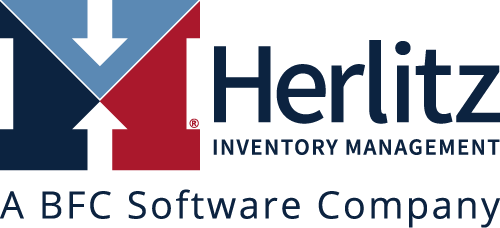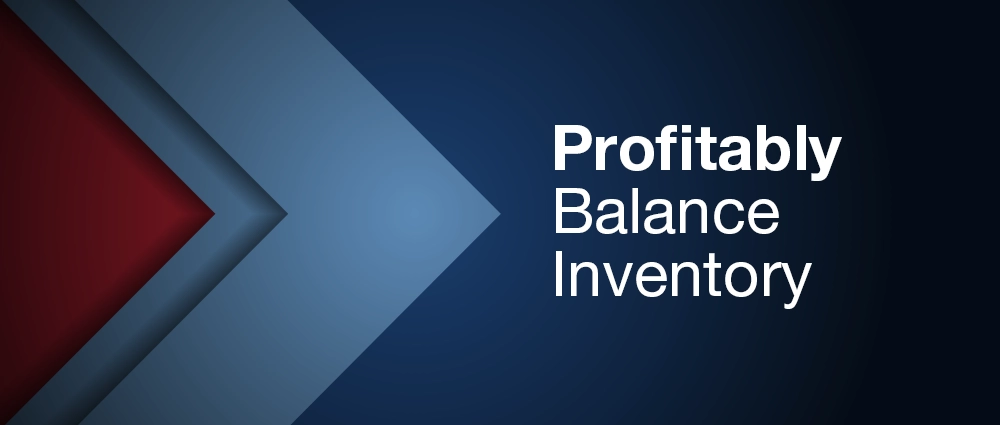The Holy Trinity of Wholesale: Profit, Inventory Turns, and Customer Service
Wholesale buyers know profit, inventory turns, and customer service levels are inextricably linked. Buyers also understand—or should understand—that it’s a tricky balancing act to have high levels of all three.
- To increase profitability, you need to increase customer service levels in your inventory management system. You also need to decrease the amount of inventory on-hand for various SKUs.
- To increase customer service levels, there needs to be excess inventory on hand, which lowers profitability.
- Buyers can intentionally reduce inventory in order to increase profitability, but reducing inventory results in lower customer service levels and the increase in deliveries can wreak havoc at receiving.
In an ideal world, buyers would know the optimal amount of inventory needed to maintain profitability and customer service level goals across the board. Before the 1960s, buyers could only leverage experience and knowledge of their customers’ purchasing habits to “predict” demand. Obviously, this left a lot of room for error. Once IBM introduced the revolutionary Wholesale IMPACT replenishment solution in 1962, everything changed.
Optimizing replenishment is a core function of any purchasing and inventory management system worth its salt today. Yet, we still see many buyers using outdated technology or in-house solutions to manage the company’s most important and largest asset: inventory. By the end of this blog, you will see why it’s imperative to have a robust purchasing system in place for your buyers.
Finding the Right Balance Between Inventory and Customer Service
What is considered competitive as an overall service level goal varies greatly by industry. In some sectors 85-90 is competitive, whereas in other sectors you and your competitors are fighting in the 99.4 to 99.6 range. To achieve this, buyers need to place highly accurate replenishment orders that not only meet demand, but take vendor constraints, lead times, promotional data, and a myriad of other factors into account. That isn’t possible without a powerful purchasing tool because there are too many factors to keep track of manually, and demand always fluctuates.
What buyers often end up doing is setting one service level target for all SKUs in each group. These groups are usually using ABC rankings based on demand levels. This is not optimal, as one item might be most profitable at a 99% service level, but 6 others might be more profitable at 95% or 92%. To hit a consistently high overall service goal, replenishment orders should be tailored to the most profitable level for each SKU at each location.
Shifting Environmental Factors Disrupt Balance
Without a good inventory management system in place, wholesalers and retailers may struggle to find the right balance between inventory, service levels, and profit. In recent years, unpredictable demand, supply chain disruptions, and high inflation are making it even more challenging.
I have recently spoken with some of our food wholesaler clients about how they can reduce their inventory while:
- Higher inflation is driving forward buying.
- Demand levels are still beyond pre-pandemic levels.
One of these clients had already dropped service on their bottom 80% of their items from 94% to 90% before we spoke. As previously stated, lowering service goals this way does work in that it will drop safety stocks in HIMPACT, thereby reducing inventory. As a result of this change, their overall service goal dropped from 96.2% to 91.3%, but actual outbound customer service attainment improved.
Why and how did the outbound service improve despite dropping the service goal on the bottom 80% of items? They also reran Order Policy Analysis (OPA) in HIMPACT with a bias toward adding a week to the order cycles. If the OPA simulator stated that the lost profit of going from what was optimal to 7 days longer was less than $2,000, they increased the order cycle. So as a result, despite having dropped their service level goals, their receiving teams were able to concentrate on the faster moving items and they had larger, yet less often, receipts from these slower moving items.
Addressing Service Level and Inventory Challenges with HIMPACT
Current HIMPACT users can and should leverage Service Level Analysis (SLA) in the system, as it enables users to adjust service goals with much greater precision. SLA is a simulator that finds the most profitable service goal for every item depending on the cost, margin, and demand variability.
It compares the lost sales for any service level between 80% and 99.9% and the cost of carrying the safety stock required to achieve each of those goals. As long as lost sales are more than the carrying cost, the system keeps moving the goal higher.
For this client, we ran the HIMPACT vendor ranking by unit and by value to find their top 10 vendors, then we ran the SLA simulation and saved the recommended service goals for each of these vendors. With some fine-tuning, SLA was able to find optimal service levels, which helped reduce inventory on the right items to limit any negative impacts to the bottom line.
HIMPACT offers robust lead time forecasting capabilities in addition to SLA. With a vast product assortment consisting of thousands of items, it is impractical for buyers to identify all the SKUs that vendors may have difficulty fulfilling.
HIMPACT assesses lead-time performance daily for every purchase order received. Vendor and SKU-specific lead times and lead time variability are closely monitored and automatically incorporated into your safety stock calculations. Consequently, HIMPACT proactively notifies your buyers of any shifts in vendor on-time performance.
This means that if your vendor’s service levels drop to 92%, the HIMPACT inventory management system will determine the additional inventory required to meet your 95% service goal.
HIMPACT Can Do the Heavy Lifting
Maintaining the right balance between inventory and customer service levels is crucial for the success of any wholesale business. While balancing profitability, inventory, and customer service can be challenging, using an effective inventory management system can optimize replenishment strategies and help achieve your desired goals.
HIMPACT was designed with valuable tools like Service Level Analysis (SLA), Order Policy Analysis (OPA) and lead time forecasting, which enable buyers to reduce inventory, limit negative impacts to the bottom line, and proactively address service level and inventory challenges. If you want to optimize your inventory management strategies, get in touch and we’ll show how HIMPACT can help you.

